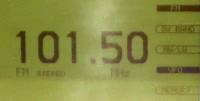en:digitalanzeige
Digital frequency displays
A digital frequency display is very helpful in tuning a set to a known frequency, in determining the frequency of an unknown signal or identifying a station on a frequency according to a frequency covering plan.
There are two technical approaches to display a frequency on a digital display:
- Frequency counter: the frequency of a signal is determined by an electronic counter circuit. In the seventies, even external frequency counters were available as an accessory to be connected to certain amateur receivers due to their high prices. The reading accuracy is 1 - 5 kHz; it depends largely on the stability of the receivers oscillator.
- PLL synthesis receiver with a frequency display: with the development of the PLL (Phase Locked Loop) synthesis circuit, it was possible to display the frequency information from the frequency processing circuit of the receiver oscillator directly on a display. The accuracy depends on the quality of the PLL synthesis circuit, sometimes frequencies can be displayed with an accuracy of 1 Hz.
Different technologies are used for digital displays:

- Mechanical digital display: the tuning mechanism is directly coupled with a mechanical counter that works like an odometer - the frequency can be read from the mechanical counter.
- Nixie tubes: the frequency is displayed on Nixie tubes, in which luminous filaments for all digits from 0 - 9 are controlled directly. Usually they are glowing in an orange-yellow colour, energy requirement is high and the Nixie tubes tend to wear out after some years of use.
- Fluorescent display:
the frequency is displayed on a fluorescent tube display unit, which glows blue - greenish,
the power consumption is relatively high (often, the display can be switched off),
good reading quality.
- LED display:
the frequencies are displayed with LED seven segment displays, sometimes there is also alphanumeric information on the operation mode or filter selection. The red or occasionally yellow or green numbers can be difficult to read when direct light falls on the display. The power consumption is medium.
- LCD display: Liquid crystal displays, some as numerical seven-segment displays, some in the form of special symbols (narrow <> wide IF filter, keypad lock, etc.), some in the form of dot matrix displays, are most commonly used in the receivers of the latest generation. They require little energy (when a voltage is applied, the liquid crystals form a recognisable symbol without consuming current), but they usually require a backlight or a reflective background, which increases the energy requirement somewhat.
- Dot matrix display, for example TFT displays: the display technology of modern smartphones gives multicolour display of frequency, operation mode, activities in a certain band (waterfall display) and even displays television pictures; it is used for example in semi-professional receivers of the latest generation.
- Blackbox units: the entire receiver electronics are housed in a cabinet without operating or display elements, the set is controlled completely from a connected computer. There is virtually no limit to the display options, but the power requirement of the connected (notebook) computer is still a limiting factor, for example, in mobile operation.
en/digitalanzeige.txt · Zuletzt geändert: 2021/04/17 20:22 von mb





